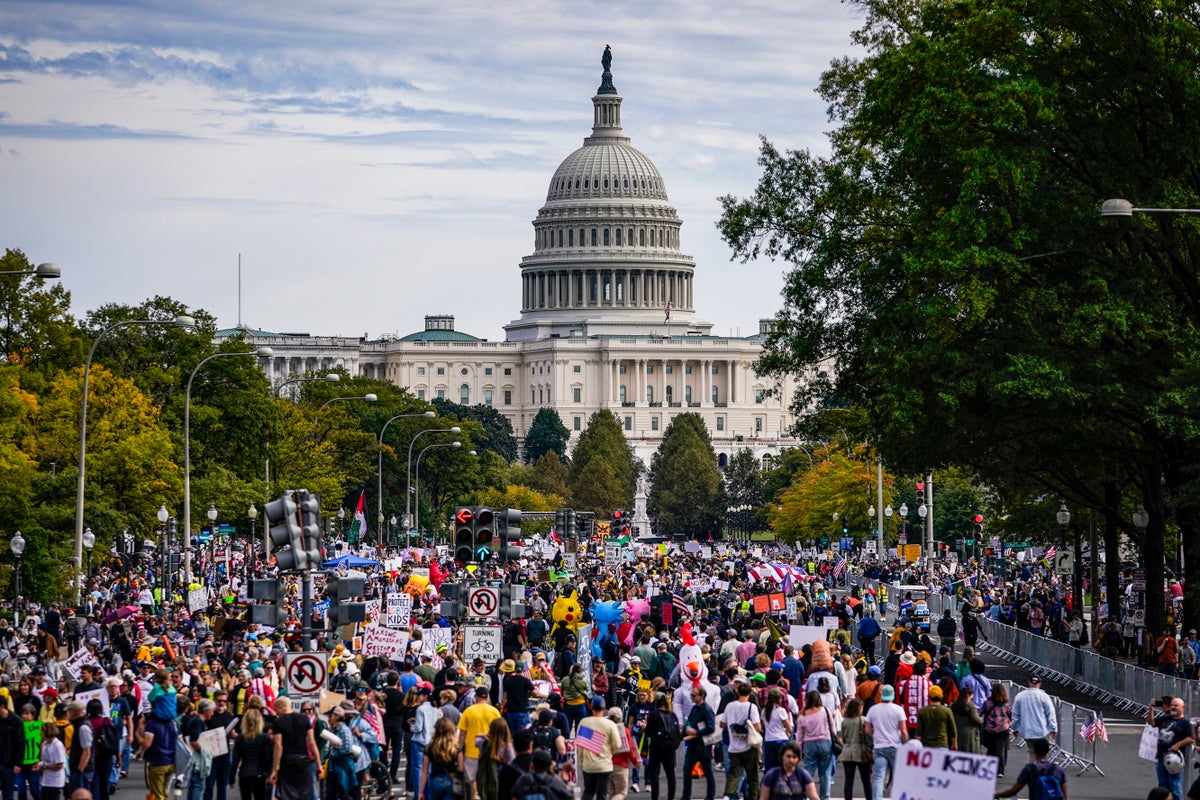U.S. Protesters Increasingly Reject Political Violence, ‘No Kings’ Survey Finds
Protestors march along Pennsylvania Avenue during the second “No Kings” protest on October 18, 2025 in Washington, DC.
Join Our Community of Science Lovers!
The most recent “No Kings” marches across the U.S. marked a sharp turn away from protesters’ acceptance of political violence, suggests one early survey by sociologists.
If you’re enjoying this article, consider supporting our award-winning journalism by subscribing. By purchasing a subscription you are helping to ensure the future of impactful stories about the discoveries and ideas shaping our world today.
Led by Fisher and her American University colleague, Arman Azedi, a team equipped with computer tablets and QR codes surveyed 348 marchers in the Washington, D.C., protest, which drew perhaps more than 200,000 people. In June at the No Kings protest in Philadelphia, as many as 40 percent of marchers agreed that “Americans may have to resort to violence in order to save our country,” the team had found. But on Saturday in the nation’s capital, only 23 percent agreed.
While the survey results are literally fresh off the tablets of scientists, the shift is worth noting, Fisher says. “My initial interpretation is the change in opinion is in response to the recent assassinations” that were politically motivated, she says, along with headlines about violent acts committed by federal agents moving into cities. In addition, march organizers emphasized peaceful protest ahead of the event.
Also ahead of the march, administration officials warned of “left-wing violence” associated with protests. But the Associated Press described the Saturday events as a nonviolent “street party” of marching bands, costumes and banners. A Harvard Kennedy School report released last week found that anti-Trump protests have spread more deeply into areas of the U.S. where a majority of people voted for Donald Trump in 2024.
“We are still not seeing the students joining these crowds,” says Fisher, who emphasized that more surveys of protests are needed to confirm substantive changes in U.S. public opinion. Though the survey found more young people among marchers compared to past ones, the majority were female, highly educated, white
Dan Vergano is a senior editor at Scientific American. He has previously written for Grid News, BuzzFeed News, National Geographic and USA Today. He is chair of the New Horizons committee for the Council for the Advancement of Science Writing and a journalism award judge for both the American Association for the Advancement of Science and the U.S. National Academies of Sciences, Engineering, and Medicine.
If you enjoyed this article, I’d like to ask for your support. Scientific American has served as an advocate for science and industry for 180 years, and right now may be the most critical moment in that two-century history.
I’ve been a Scientific American subscriber since I was 12 years old, and it helped shape the way I look at the world. SciAm always educates and delights me, and inspires a sense of awe for our vast, beautiful universe. I hope it does that for you, too.
If you , you help ensure that our coverage is centered on meaningful research and discovery; that we have the resources to report on the decisions that threaten labs across the U.S.; and that we support both budding and working scientists at a time when the value of science itself too often goes unrecognized.
In return, you get essential news, captivating podcasts, brilliant infographics, , must-watch videos, challenging games, and the science world’s best writing and reporting. You can even gift someone a subscription.
There has never been a more important time for us to stand up and show why science matters. I hope you’ll support us in that mission.
Thank you,
David M. Ewalt, Editor in Chief, Scientific American
Source: www.scientificamerican.com
